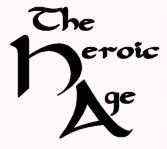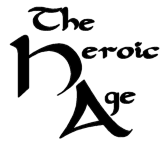Saints and Sacred Space: An Interactive Database—A Call for Collaborators
Margaret Cormack, Dept. of Religious Studies, College of Charleston, and Donald Prudlo, Department of History, Jacksonville State University
© 2009 by Margaret Cormack and Donald Prudlo. All rights reserved. This edition copyright © 2009 by The Heroic Age. All rights reserved.
Abstract: This article is both a description of the Saints and Sacred Spaces digital project and a call for collaborators for the project. The project aims to provide interactive maps and information on saints's miracles, locations, churches, and other places associated with the saints.
§1. It is unnecessary to make a case to medievalists for the importance of accurate information about locations associated with saints—churches and chapels dedicated to them, holy wells named for them, locations where miracles are said to have taken place, or destinations of pilgrims in search of healing.
§2. We are currently working on, and seeking collaborators for, a project that will identify and map such locations using an interactive on-line database. The goal of the project is to attach a database to an electronic GIS (Geographical Information System) that will enable the user to identify and map different kinds of data associated with saints (churches, statues, relics, manuscripts, holy wells, miracles), and analyze that data by 'object' (chapel, miracle, vita, statue), saint, location, and date. A preliminary model, using Icelandic data from the diocese of Hólar, can be seen at www.tasc.mpg.de/iceland/ or (with a very primitive map at the bottom of each entry) www.tasc.mpg.de/iceland_new (the latter has an 'underline' symbol before 'new'). The Icelandic data includes church dedications and church contents: statues and sagas of individual saints, gifts to the saints and other indications of veneration. One can, for example, search for churches dedicated to St. Nicholas, sagas of St. Olaf, vitae of a particular saint, etc. Estates owned by churches are also included, and it is planned to add information about payments and dues which may provide important information about agriculture and landscape in the Middle Ages.
§3. Social history will be incorporated through the mapping and analysis of miracle accounts, for which a preliminary model using Google Maps is under construction at: http://maps.cofc.edu/website/saintatlas/. It should be up and running by the time this note appears. It will be possible to search the database for different types of miracle, as well as the status, age, gender, etc. of the recipient. So far, only miracles of Thomas Becket and Peter Martyr are entered.
§4. We plan to combine these databases and to produce an on-line reference tool that will incorporate our data, and that of anyone else who cares to contribute to it. Interested persons will be able either to download a basic database, which they can fill out and send back to us for uploading, or enter their material on-line. (Obviously, we'll review it before making it available, and no data will be made public without permission). The basic structure and categories are indicated in the databases already created; however, scholars with different kinds of religion-related data are welcome to contact us about incorporating it. No material is too limited; we would be interested, for example, in lists of relics like that in Secgan be þam Godes sanctum þe on engla lande ærost reston, or pilgrimage routes; in fact, our preference is for source-by-source data, which can reveal as much about the sources as about the saints. Likewise, any kind of information about churches—property owned, dues exacted, indulgences granted—is of interest. Possible connections to databases / GIS of other types (archaeological sites, placenames) are also being considered. The data need not be Christian; we have already had queries from individuals studying Muslim saints' cults concerning future collaboration.
§5. One of the important features of this project is its reliance on primary sources; the result will be a collection of data, not an 'encyclopedia entry,' for a given site. The database will work at two levels: data will be available in English for the purpose of searching, but diplomatic spellings (as far as this is feasible using existing fonts) will be included, as will information about the manuscripts from which the information is taken; this is illustrated by clicking on 'data' in the Icelandic databases. We would love to hear from anyone who might be working on data that could benefit from this sort of analysis; it should be possible to make connections to a wide variety of databases containing different kinds of material, as long as the essential information (saint, event or object, location, source reference, and date) are included. We envision our site as an index to a wide variety of databases, which will be standardized for the purpose of comparison, but will also provide additional information of interest to different investigators. The essential feature is the inclusion of primary source material in the original language, accurately referenced, for the benefit of scholars.
§6. No, we do NOT have grant money to pay for data collection—that's why we're announcing the project in this and similar venues. Our hope is that people who have data they are working on will contribute it for incorporation; we can offer interactive mapping possibilities that may not be available at all universities. The more projects and contributors, the better our chances of getting a major grant and expanding the project. At the very least, we should be able to put together a series of conferences at which data (and conclusions based on it) can be presented.
§7. We would very much appreciate comments on the current models, including points where comparable sites, such as that of TASC at http://www.le.ac.uk/users/grj1/tasc.html or the Scottish database at http://www.shc.ed.ac.uk/Research/saints/Project.htm may have the advantage. While we think our system will be easier to use and contribute to, we welcome suggestions for improvement.
Margaret Cormack
Dept. of Religious Studies
College of Charleston
Donald Prudlo
Department of History
Jacksonville State University

